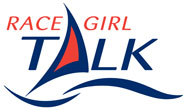Sailboat Racing Trim — Part 7
In Chapter 7 of his book Racing Trim, Bill Gladstone talks about upwind helmsmanship. The following post shows a short summary of that chapter.
In order to drive the boat well, helmsmanship is really dependent on taking in a lot of information and being able to turn it into some useful insight really quickly. The driver needs to maintain good boat speed and ability to point while being really aware of the feel of the boat. In order for this to be successful, it is important for crew members to relay information about boat speed and conditions compared to other boats on the course. To be fast, the driver and trimmers need to work closely to balance boat speed and handling with the right sail trim. The dialogue needs to be continuous.
Here’s a video I found on YouTube that gives some more information about basic use of telltales:
You can tell a lot by the feel of the boat. If the boat is slow or unresponsive, trim needs to be adjusted. Be really aware of the feel of the wind. Often, you’ll feel changes before you see the result show up on your instruments. The heel angle should be constant too. If the boat is heeling too much, the driver will be fighting too much helm and leeway. When the boat is properly trimmed, you should have about 5 degrees of weather helm. Here’s a tip — If a tiller is X feet long, the tip of it will be X inches off center when you have 5 degrees of helm.
Trimmers need to be continuously feeding information to the driver and vice versa. Folks on the rail need to be calling waves and puffs so that the driver can steer through them most effectively.
Jib telltales give one of the biggest pieces of information about how to steer the boat or trim the sail. Telltales will be streaming back on both sides of the sail (top, middle, and bottom) when the sail is optimally trimmed for full speed, and driving will match the trim. If the driver steers a course slightly lower than full speed, the outer telltales will dance and the boat will be in “acceleration mode.” Steering slightly higher than full speed mode gives “point mode.” That can be seen when the inside telltales rise, but not luff. If the driver steers higher than point mode, that results in pinching (the boat is forced up and loses speed). Be careful — pinching is one of the most common ways to lose time and distance on the race course.
Tacking should be a slow smooth turn that lets the boat coast upwind and carries the speed, with the turn being faster in the second half.
If telltales are dancing and won’t settle down, the jib may be over trimmed or too flat. Remember, trim and driving must match each other to be balanced. So, the situation can be changed by driving differently, or trimming differently. Team members must talk to each other in a way that you know what is best for the boat — and do that.
Targets are information provided by the boat manufacturer that can show how the boat would optimally perform with given wind speed and angle, etc. Sometimes, this can be really helpful information to have. However, for it to be useful, instruments have to be flawlessly accurate and the wind has to be very consistent.
When driving at the start, the helmsman has to be very focused with an ability to block out all the extra information. It can be really helpful to find a buoy or some mark in the water to practice start and stop drills. This would allow team members to feel how the boat behaves in many different situations — how quickly will it stop? How quickly does speed build back again? What are the most effective ways to accomplish the necessary maneuvering?
Here’s a link to a wind indicator, if you need one:
This is the seventh in a series of posts based on Bill Gladstone’s book Racing TRIM from the North U. Series. Periodically, I post about a chapter or two. This will be my short summary of what I’ve read. You can read the posts to get my abbreviated summary; or you could read through the books with me. Your comments can help point out what you find most interesting, or even poke fun at what I do and don’t know. If you are interested in getting this book, you can find it in the online store section of NorthU.com for $25.



